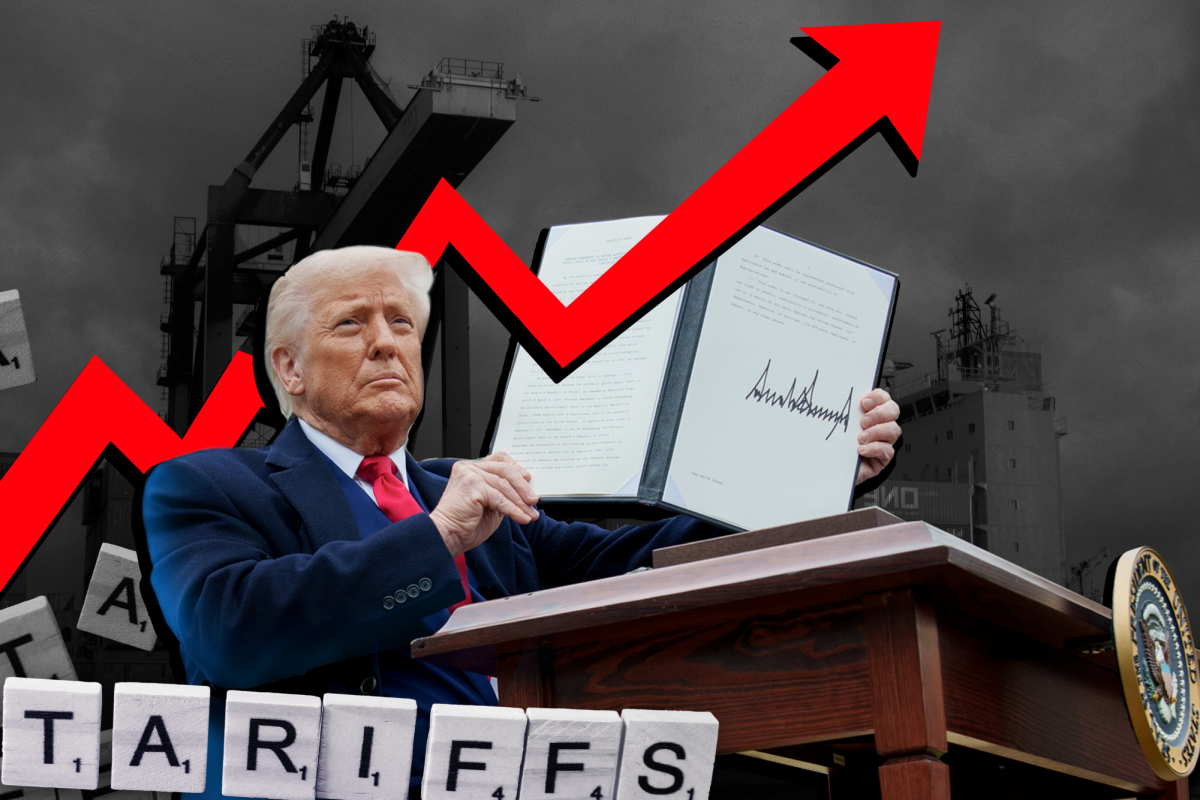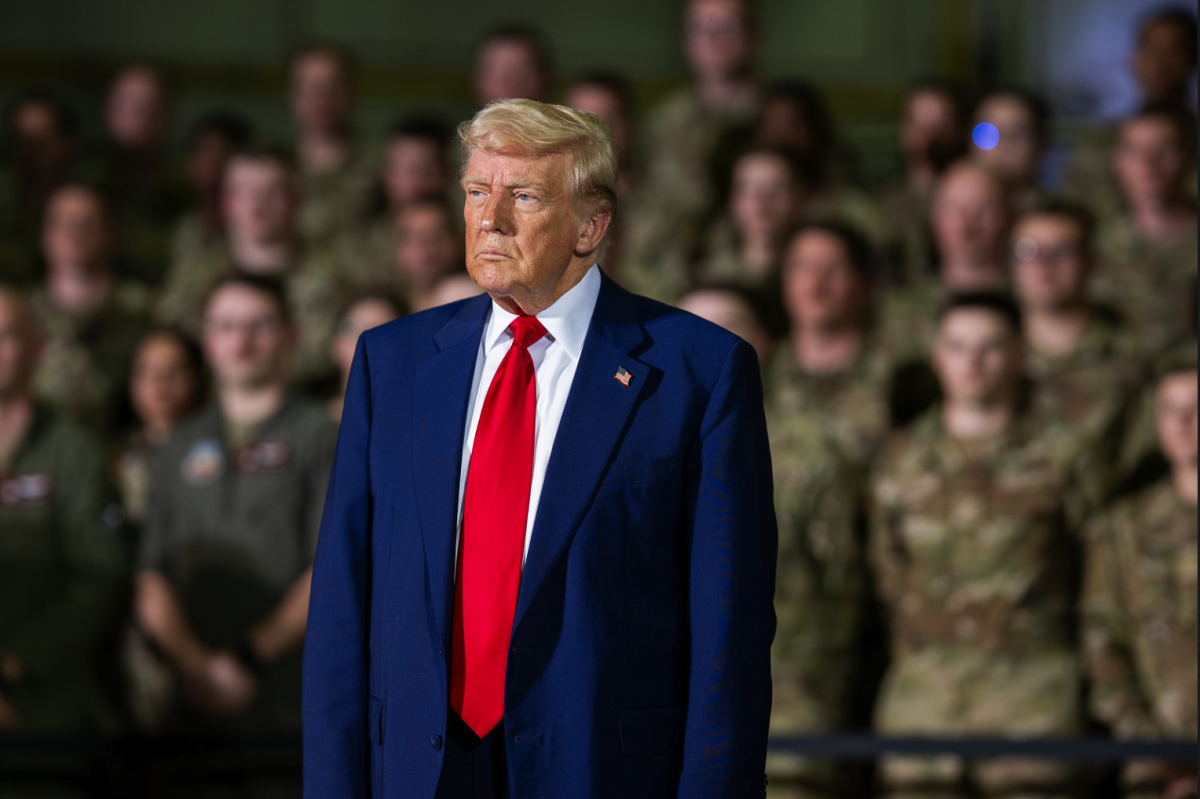In recent days, the stock market has fluctuated between highs and lows following tariffs implemented by the Trump administration. The Dow Jones Industrial Average sank 350 points last Monday, surged on Wednesday after President Donald Trump announced a 90-day pause to most “reciprocal” tariffs and fell by 1,000 points Thursday. On Friday, the Dow rose by 619 points.
Despite Friday’s surge, economic experts remain uncertain about the state of the stock market. William Ridley, professor in ACES and economist specializing in international trade, compared the current volatility to some of the most unstable economic periods in recent history.
“I think it’s a huge (amount of uncertainty), certainly the most we’ve seen since the start of the COVID pandemic,” Ridley said. “In March 2020, you saw these major declines in the stock market day to day. Before that, you have to go back to the recession of 2008 and the financial crisis.”
Trump’s tariffs demonstrate protectionism — a strategy that limits international trade with the goal of bolstering domestic production. The White House said the tariffs aim to bring more manufacturing back to the United States.
According to Ridley, no administration has implemented such a strong protectionist policy in the last several decades.
Get The Daily Illini in your inbox!
“Almost nobody alive has seen tariffs enacted by the U.S. government to this extent in decades and decades,” Ridley said. “We’re living in a protectionist world, one that we haven’t lived in in a long, long time.”
Ridley said daily fluctuations — reminiscent of past economic crises — reflect widespread uncertainty, fueled in part by Trump’s tariff strategy.
“Even during these big recessionary events like the Great Recession and the Great Depression, though the trend line was negative, you saw this variation day-to-day,” Ridley said. “I think that’s because, in the current situation, there’s a lot of uncertainty and people don’t know what the next move is.”
In February, Trump imposed tariffs on imports from China, Canada and Mexico, citing a national emergency posed by “illegal aliens” and the fentanyl crisis. On April 2, the White House implemented tariffs on roughly 90 countries, triggering an almost $2 trillion loss in value in the S&P 500 index.
“These tariffs are central to President Trump’s plan to reverse the economic damage left by President Biden and put America on a path to the new Golden Age,” the White House wrote in the announcement. “This builds on his broader economic agenda on energy competitiveness, tax cuts, no tax on tips, no tax on Social Security benefits, and deregulation to boost economic prosperity.”
Then, on Wednesday, a week after announcing the tariffs, Trump lowered his proposed tariff rate and paused most of them for 90 days. The pause did not apply to Chinese imports, on which Trump raised the tariff rate to 145%. In response, China imposed a 125% tariff on U.S. imports.
Ridley said that even if the tariffs on these countries were lifted overnight, it would be difficult for the U.S. to maintain strong diplomatic relationships.
“I think we’ve already burned a lot of bridges, not only with China, who’s kind of an adversarial relationship, but with some of our closest trading partners,” Ridley said. “We’ve been friends with Canada for decades, and just overnight, we have a president who said, ‘Well, that doesn’t matter anymore.’”
Whether or not tariffs go into effect 90 days from now, Ridley said the administration’s plan to revive the manufacturing industry would take a while to form.
“It’s going to be more costly,” Ridley said. “There’s a reason we’re buying stuff from China, Vietnam, Japan and the EU — because they’re more efficient in producing certain goods relative to the U.S.”
The tariffs have also sparked conversation in the Investment Management Academy, a money-managing organization in the Gies College of Business that showcases investment and analyzes trade.
According to Om Badiyani, the academy’s vice president of membership and a graduate student studying finance, tariffs have been a hot topic within the academy.
“Ever since tariffs have been in the discussion, tariffs have come into almost every single class discussion we’ve had,” Badiyani said. “We also have a macroeconomic committee that gives out a macro-Monday report every Monday, and tariffs have been a big discussion.”
The same discussions are occurring in the Investment Portfolio Organization, an RSO that teaches accounting, investment strategies and prepares students for internships and jobs.
Andy Pei, IPO’s co-president and sophomore in Business, said discussing the current state of the stock market has been a valuable learning exercise for the group.
“We like to bring it up at the end of class to get the conversation going, keep everyone updated on what’s going on and see how everyone’s feeling,” Pei said. “The point of the organization is programming, and we are here to teach people who are going through that.”
Despite the ongoing uncertainty in the stock market, Ridley has his doubts that the current situation is the new normal.
“It could be that these tariffs are rescinded tomorrow,” Ridley said. “The power to set tariffs rests in the hands of the executive, and the next president on day one could say ‘These tariffs are gone today,’ so that might be a return to normalcy.”







